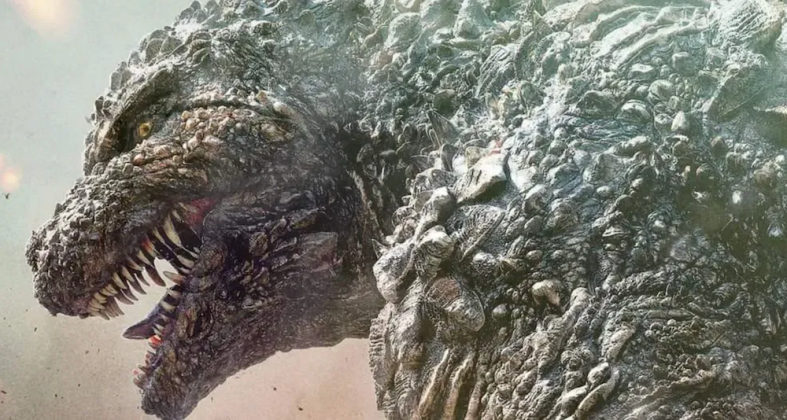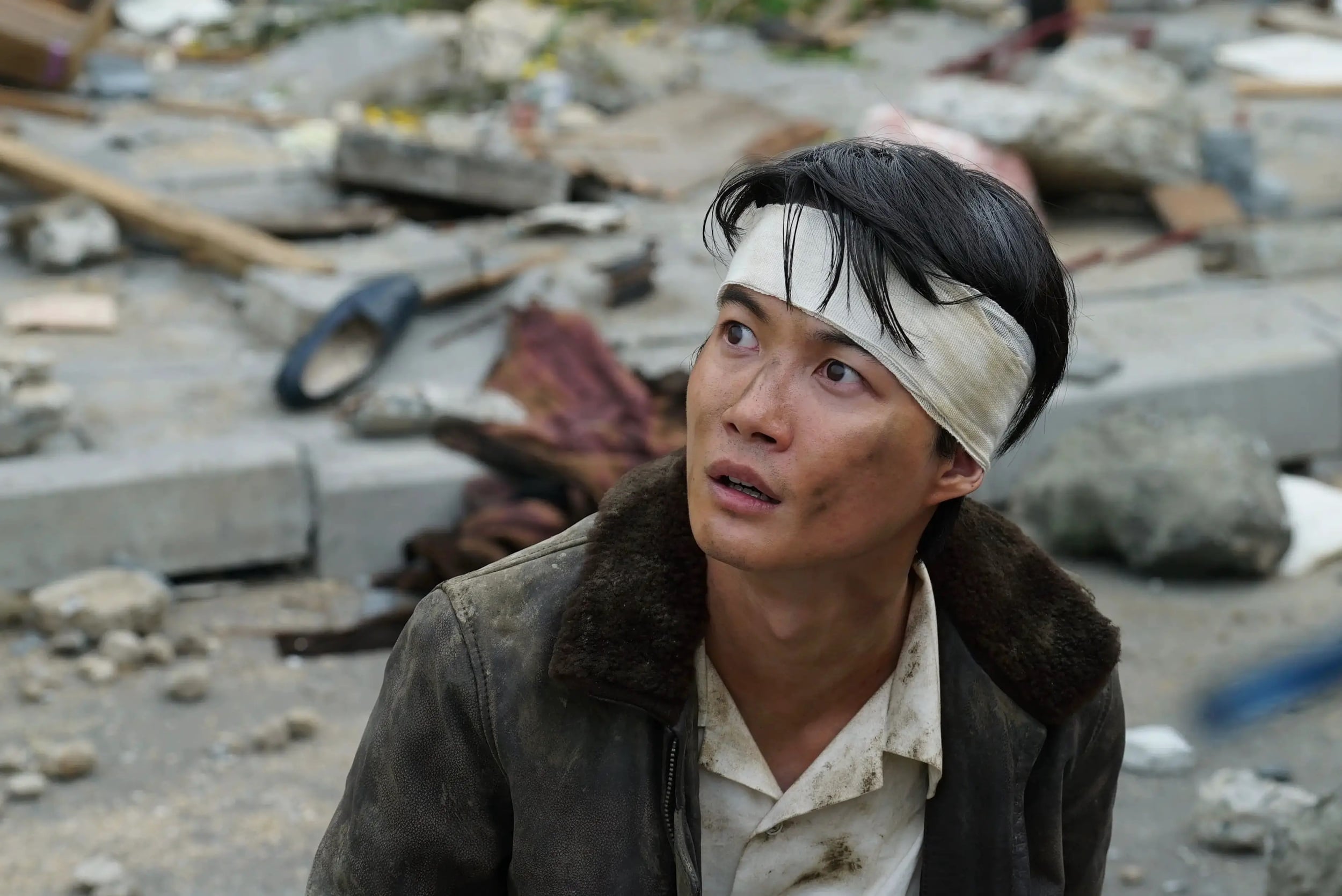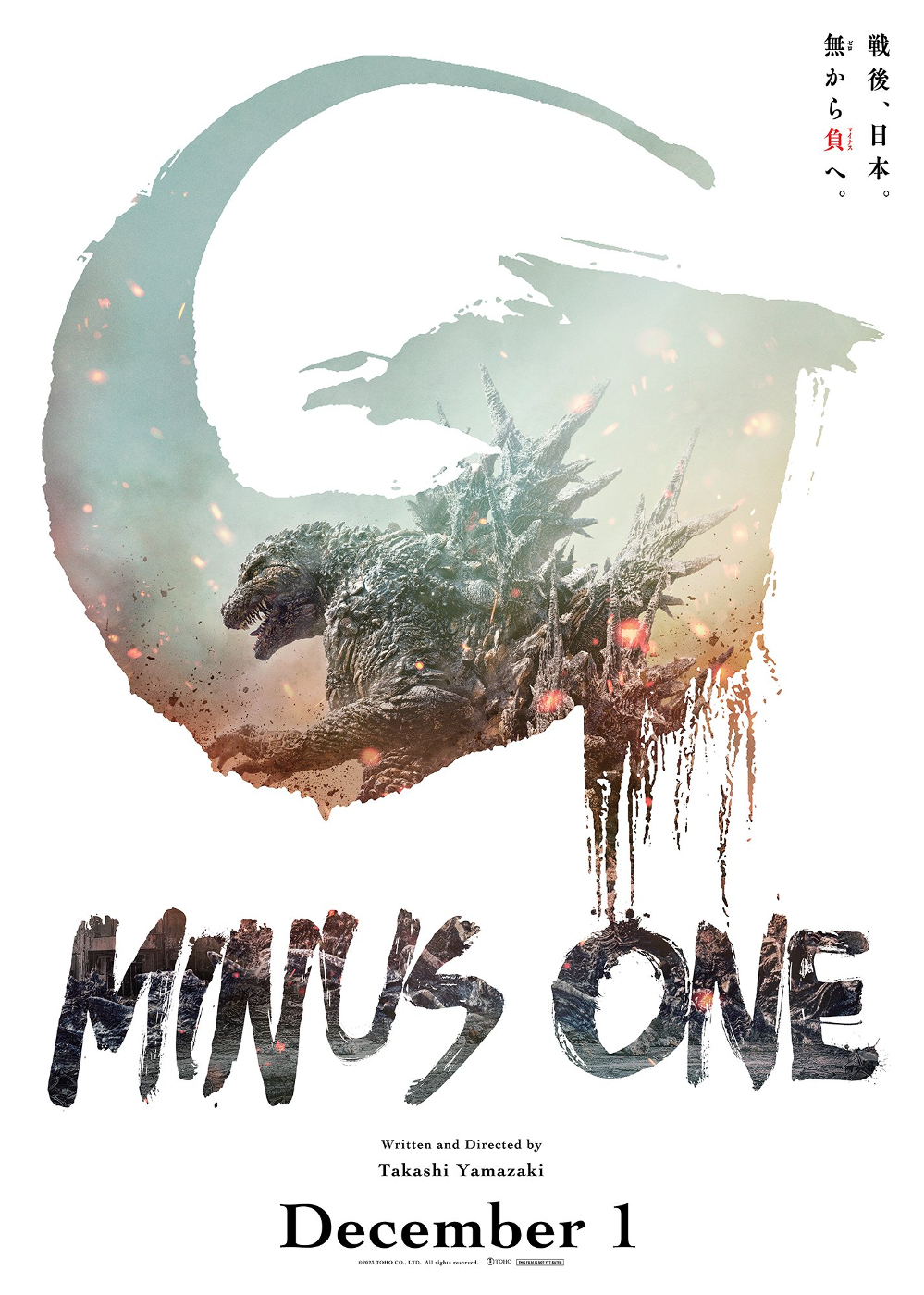‘Godzilla Minus One’ Review – A Best Of The Year Contender

Godzilla Minus One is the first modern Godzilla film to come along that feels spiritually connected to the original movie from 1954. It could pass as a reboot with moments like the train sequence feeling like both a throwback and a contemporary update. But it’s so much more.

In 1945, during the last days of World War II, a kamikaze pilot named Koichi Shikishima (Ryunosuke Kamiki, Suzume) landed on Odo Island, claiming his aircraft malfunctioned. That night, a dinosaur-like beast locals call “Godzilla” attacks and kills everyone except for Koichi and Tachibana (Munetaka Aoki, The Roundup: No Way Out), the lead mechanic.
A year later, Koichi returns home only to find out that his parents have died in the bombing of Tokyo. He gets a job as a minesweeper to support a woman named Noriko (Minami Hamabe, Shin Kamen Rider) and an orphaned little girl named Akiko (Sae Nagatani). Still haunted by fleeing from his duty as a kamikaze pilot during the war and the men who died on Odo Island, Koichi’s guilt hits rock bottom when Godzilla returns mutated and much bigger than before.

As Godzilla begins carving a wave of destruction towards Tokyo and military weapons do not stop him, it’s up to the civilians with war experience to formulate a plan that will hopefully keep the unstoppable monster from destroying the rest of Japan.
While the original film capitalized on the war, Godzilla Minus One picks up as the war ends and Japan is at its lowest. As Godzilla strikes, Japanese defenses are at their weakest or practically nonexistent. With nothing at their disposal, they have to rely on outside forces to attempt to stand toe-to-toe with Godzilla. It is their job to stall for time, and all they can do is sit, watch, and die once the monster steps ashore. It’s mesmerizing, but it’s also absolutely terrifying.
Godzilla goes through changes again to reach colossal proportions, but he has a minor evolution compared to Shin Godzilla with only two different forms in Minus One. As a youngling, Godzilla is smaller and faster, and moreover, the atomic bomb is seemingly still the cause of its birth – perhaps in both instances. The sequences of it stomping and trashing things are as devastating as they are sorrowfully impressive.
The camp associated with the rubber suit days is a distant memory, and likewise, the Godzilla here seems like a far ‘SKREE-ONNKK’ away from the MonsterVerse counterpart. Humans are these annoying obstacles to monstrous destruction in those films, while most of the kaiju know how to smash yet don’t have as much cause or anger behind the devastation.

There are some awe-inspiring Godzilla sequences in Minus One beginning with its atomic breath wiping out cities instantly, leaving Godzilla smoldering. Seeing that blue wave slowly migrate up the fins of its tail to the back of its head is executed in a refreshing and harrowing way. The boat chase is a thing of beauty, as well. Godzilla swallowing explosive mines that are then shot at by the mine-exterminating boat crew results in one of the most exhilarating sequences ever realized in the franchise.
The cast doesn’t phone in either. Seeing Minus One, you are witness to a once-in-a-lifetime instance of a unique big monster movie where humans are as intriguing as the creature. You feel invested in Koichi’s inability to escape the war and Godzilla’s indestructibility. On the home front, Koichi and Noriko aren’t romantically involved, and Akiko isn’t related to either, but the bold writing choice pays off.

The human characters can each live their own lives rather than always make joint decisions or always be in the same place together at once. The fact that Godzilla shows up and the fight against him brings the surrogate family back together makes the film all the more fascinating.
The cinematography by Kozo Shibasaki helps give the impression that Godzilla is this inevitable force of nature. The rampages feel intimate and make the audience feel like they’re part of a terrifying hysteria. Perspective-wise, you often look up at Godzilla as he stomps on unsuspecting people or bites down on them and hurls them into the sky.

Godzilla Minus One is not only one of the best films out of the 30-plus in the series, but also one of the best films of the year. The acting is superb, the destruction is immense and incredible, and the gnarly Godzilla design is fantastic. It’s ridiculous, if true, that this film only has a budget of $15 million because it looks better than most Hollywood blockbusters.

NEXT: ‘Saltburn’ Review – Happily Drowning In A Sea Of Luxury
More About:Movie Reviews Movies
